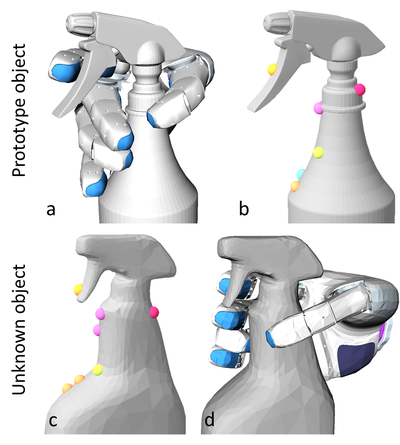Shape Analysis
When a robot system encounters objects in its environment for which no specific sensory, geometric, and semantic model knowledge are available, its perceptual capabilities are strongly challenged. This situation would be very common in the ordinary human living environment, that is, in private homes as well as at public places or at many work places.
Sensible interaction with unknown objects, in particular their correct manipulation, can be guided through relations established between these objects and already known exemplars of a similar kind. The critical question is: which parts or points of a new object correspond to which parts or points of a known, prototypical object? It is answered through computation of a suitable warping, driven by global and local shape similarities, of the prototype shape onto the new shape.



Selected Publications
Th. Stouraitis, U. Hillenbrand, and M. A. Roa. Functional power grasps transferred through warping and replanning. Proceedings IEEE International Conference on Robotics and Automation -- ICRA 2015.
U. Hillenbrand. Detecting objects of a category in range data by comparing to a single geometric prototype. Proceedings IEEE/RSJ International Conference on Intelligent Robots and Systems -- IROS 2013.
U. Hillenbrand and M. A. Roa. Transferring functional grasps through contact warping and local replanning. Proceedings IEEE/RSJ International Conference on Intelligent Robots and Systems -- IROS 2012.
